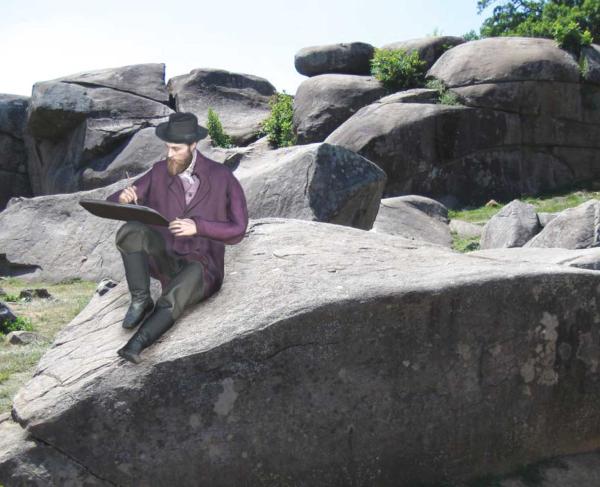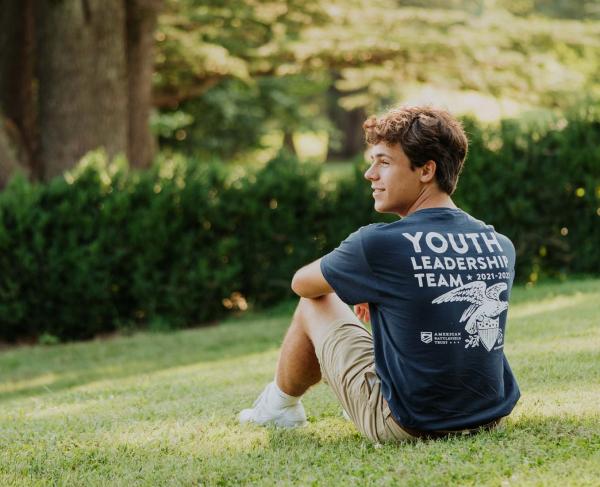
From early May to mid-June 1864, Union Lt. Gen. Ulysses S. Grant launched his forces against Confederate Gen. Robert E. Lee’s Army of Northern Virginia. Documentary photographers followed the soldiers with bulky cameras, fragile glass plates and dangerous chemicals. Professional sketch artists, employed by the newspapers and popular periodicals of the day, deployed with the simplest implements of all — paper and pencils.
Photographer Timothy O’Sullivan and sketch artists Alfred Waud and Edwin Forbes, among others, traveled with the Union forces during what became the Civil War’s bloodiest operation — the Overland Campaign. Together, the sketch artists and photographers produced a remarkable body of work that documented the scenes of the great chess game that played out between the Rapidan and James Rivers — both the monotony of camp and the march and the heat of battle during some of the most storied engagements of the Civil War—the Wilderness, Spotsylvania, North Anna and Cold Harbor.
Although photos and drawings from the Overland Campaign serve as invaluable resources for historians and enthusiasts today, they served a more immediate need for 19th-century citizens hungry for news and depictions of the horrible conflict through which they were living.

Into the Wilderness
On May 4, 1864, Grant’s largest force, the Army of the Potomac under Maj. Gen. George G. Meade, crossed the Rapidan River at Germanna Ford, intent on forcing Lee’s Army of Northern Virginia out of its fortifications and into the open for battle. Both O’Sullivan and Forbes captured the massive crossing on May 4–5, 1864. Together, the views show different soldiers crossing the river on two different days, from both banks.
The technology of the day, however, did not yet allow for the printing of half-tone photographs or sketches in newspapers and magazines — they needed to be converted to printable formats such as “woodcuts” or engravings. Therefore, Forbes’s drawing was converted into an engraving for wide publication and O’Sullivan’s photograph was issued as an individually printed photograph, which people could purchase for viewing in their parlors.
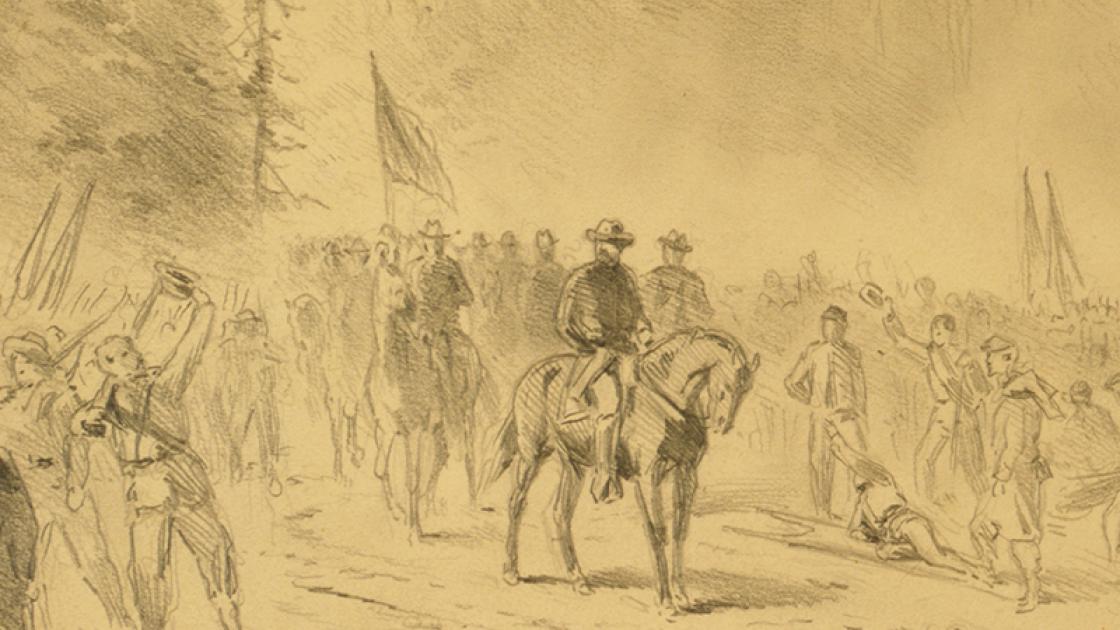
A Welcome Change
Grant suffered horrendous losses and was rebuffed in the Wilderness during one of the war’s bloodiest engagements. But he quickly proved to his army and the world that he was unlike the previous military leaders in the east who had halted operations after losses and sometimes even after victories. Grant’s dogged determination would ultimately bring the Civil War to a close.
O’Sullivan did not capture this important event, but Edwin Forbes could and did, on May 7. Here, Grant’s troops are turning southward, continuing the offensive, and cheering their brave commander.
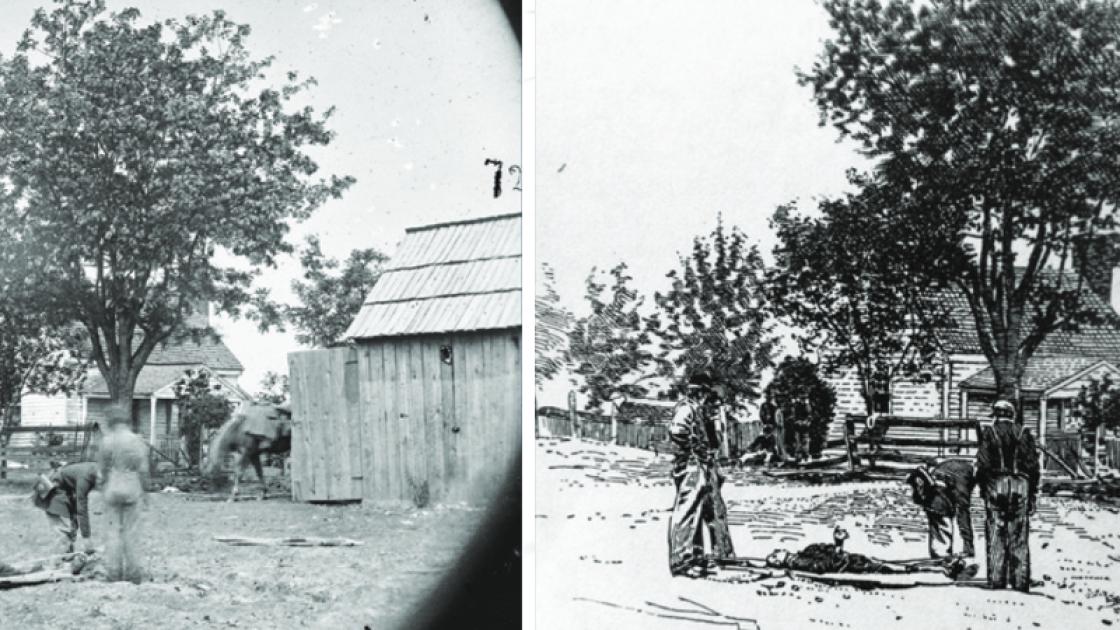
A Gruesome Task
The armies raced and met at the roads around Spotsylvania Court House, where they fought for the better part of two weeks. One of the last actions at Spotsylvania was the little-known Battle of Harris’s Farm on May 19, 1864. The opponents fought for only a few hours but the engagement produced more than 2,000 casualties.
On May 20, Timothy O’Sullivan and his assistants poured chemicals, prepared plates and set up their stereoptic camera to record some of the carnage at Harris’s Farm. O’Sullivan captured six stereographic photographs on glass plates of dead Confederate soldiers. One of these shows members of the 1st Massachusetts Heavy Artillery in the process of moving a Confederate corpse for a quick burial. This photograph was converted into an engraving for mass-printing and also printed and mounted onto cards to be sold as a stereoview. When these twin-image cards were placed into a special viewer, the photographs appeared in 3-D. The card shown here was manufactured after the Civil War and incorrectly describes the dead soldier as wounded.
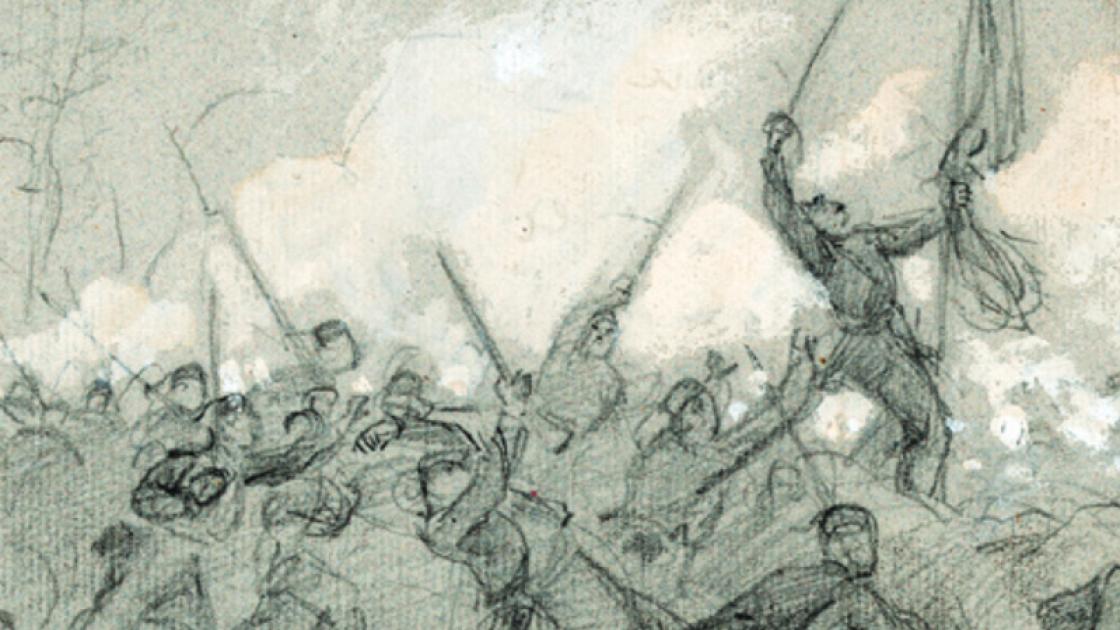
Breathing His Last
The last major battle of the Overland Campaign was the Union disaster at Cold Harbor. During one of many Union assaults on June 3, 1864, the bloodiest of many days of fighting, Col. James McMahon of the 164th New York seized the colors and led his men forward, screaming, “Now, boys, we’ve got ’em!” These were his last words. In his quick sketch of the scene, Alfred Waud captured a moment that no camera of the time could capture—the immediacy of death on the front line of battle.
We should be grateful for the documentary record photographers and sketch artists left behind and appreciative of the sacrifices and efforts these individuals made to chronicle the conflict. Employing different methods of capturing and distributing (and therefore, in a way, preserving) the graphic representations of the Civil War, these men opened an enduring window into the nation’s great upheaval.
Related Battles
17,000
13,000
18,399
12,687
12,737
4,595
